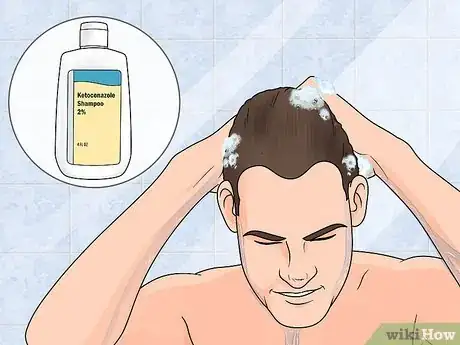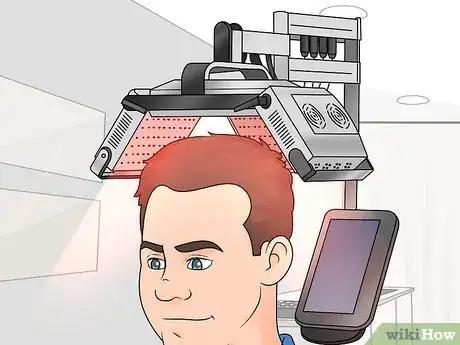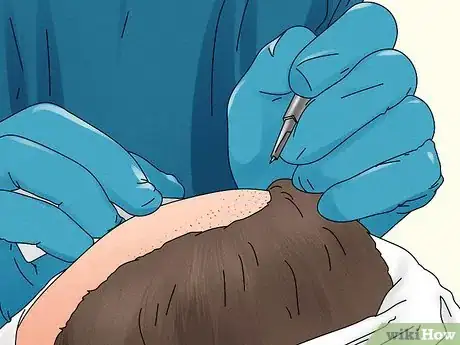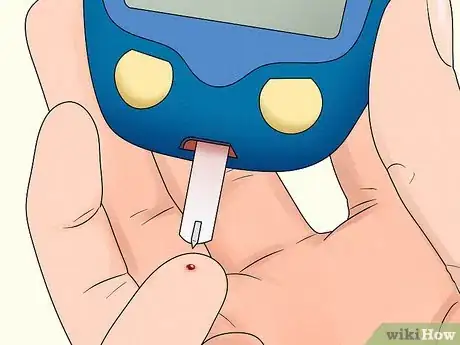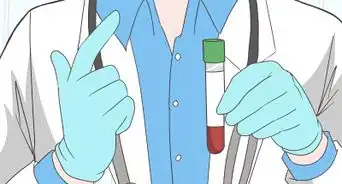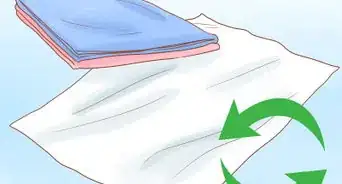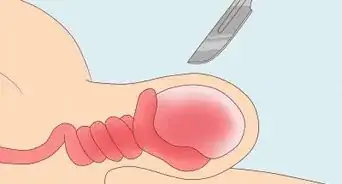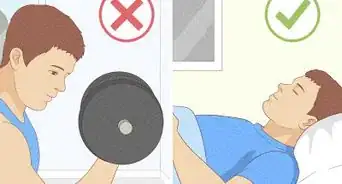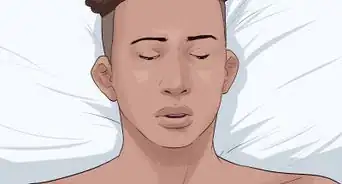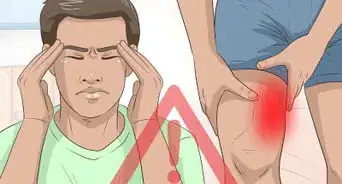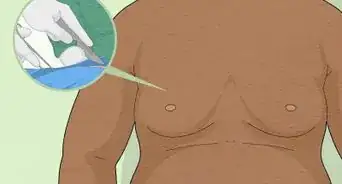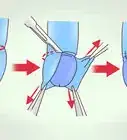This article was co-authored by Courtney Foster. Courtney Foster is a Licensed Cosmetologist, Certified Hair Loss Practitioner, and Cosmetology Educator based out of New York City. Courtney runs Courtney Foster Beauty, LLC and her work has been featured on The Wendy Williams Show, Good Morning America, The Today Show, The Late Show with David Letterman, and in East/West Magazine. She received her Cosmetology License from the State of New York after training at the Empire Beauty School - Manhattan.
There are 10 references cited in this article, which can be found at the bottom of the page.
wikiHow marks an article as reader-approved once it receives enough positive feedback. This article has 15 testimonials from our readers, earning it our reader-approved status.
This article has been viewed 1,611,855 times.
Noticing a few extra strands of hair on your pillow or some thinning spots on your scalp? It’s super common for men to start losing their hair, especially as you get older and if you have a family history of male pattern baldness. But just because it’s common doesn’t mean you can’t do anything about it! There are a variety of products and strategies you can use to treat your hair loss. To help you do it, we’ve put together an authoritative list of things you can try.
Steps
Expert Q&A
Did you know you can get premium answers for this article?
Unlock premium answers by supporting wikiHow
-
QuestionThough it's my genetics to have hair loss, how can I cure it?
 Chris M. Matsko, MDDr. Chris M. Matsko is a retired physician based in Pittsburgh, Pennsylvania. With over 25 years of medical research experience, Dr. Matsko was awarded the Pittsburgh Cornell University Leadership Award for Excellence. He holds a BS in Nutritional Science from Cornell University and an MD from the Temple University School of Medicine in 2007. Dr. Matsko earned a Research Writing Certification from the American Medical Writers Association (AMWA) in 2016 and a Medical Writing & Editing Certification from the University of Chicago in 2017.
Chris M. Matsko, MDDr. Chris M. Matsko is a retired physician based in Pittsburgh, Pennsylvania. With over 25 years of medical research experience, Dr. Matsko was awarded the Pittsburgh Cornell University Leadership Award for Excellence. He holds a BS in Nutritional Science from Cornell University and an MD from the Temple University School of Medicine in 2007. Dr. Matsko earned a Research Writing Certification from the American Medical Writers Association (AMWA) in 2016 and a Medical Writing & Editing Certification from the University of Chicago in 2017.
Family Medicine Physician
-
QuestionHow long do I use minoxidil to treat my hair loss?
 Chris M. Matsko, MDDr. Chris M. Matsko is a retired physician based in Pittsburgh, Pennsylvania. With over 25 years of medical research experience, Dr. Matsko was awarded the Pittsburgh Cornell University Leadership Award for Excellence. He holds a BS in Nutritional Science from Cornell University and an MD from the Temple University School of Medicine in 2007. Dr. Matsko earned a Research Writing Certification from the American Medical Writers Association (AMWA) in 2016 and a Medical Writing & Editing Certification from the University of Chicago in 2017.
Chris M. Matsko, MDDr. Chris M. Matsko is a retired physician based in Pittsburgh, Pennsylvania. With over 25 years of medical research experience, Dr. Matsko was awarded the Pittsburgh Cornell University Leadership Award for Excellence. He holds a BS in Nutritional Science from Cornell University and an MD from the Temple University School of Medicine in 2007. Dr. Matsko earned a Research Writing Certification from the American Medical Writers Association (AMWA) in 2016 and a Medical Writing & Editing Certification from the University of Chicago in 2017.
Family Medicine Physician
Warnings
- Don’t take any prescription medication for hair loss without talking to your doctor first to make sure it’s safe.⧼thumbs_response⧽
References
- ↑ https://dermnetnz.org/topics/ketoconazole/
- ↑ https://dermnetnz.org/topics/male-pattern-hair-loss/
- ↑ https://www.mayoclinic.org/diseases-conditions/hair-loss/diagnosis-treatment/drc-20372932
- ↑ https://medlineplus.gov/ency/article/001177.htm
- ↑ https://medlineplus.gov/ency/article/001177.htm
- ↑ https://medlineplus.gov/ency/article/001177.htm
- ↑ https://www.mayoclinic.org/healthy-lifestyle/stress-management/expert-answers/stress-and-hair-loss/faq-20057820
- ↑ https://my.clevelandclinic.org/health/articles/8133-stress-10-ways-to-ease-stress
- ↑ https://pubmed.ncbi.nlm.nih.gov/12673073/
- ↑ https://pubmed.ncbi.nlm.nih.gov/23629119/
- ↑ https://www.mayoclinic.org/diseases-conditions/hair-loss/diagnosis-treatment/drc-20372932
- ↑ https://www.mayoclinic.org/diseases-conditions/hair-loss/diagnosis-treatment/drc-20372932
- ↑ https://dermnetnz.org/topics/male-pattern-hair-loss/
- ↑ https://www.mayoclinic.org/healthy-lifestyle/stress-management/expert-answers/stress-and-hair-loss/faq-20057820
- ↑ https://www.mayoclinic.org/diseases-conditions/hair-loss/symptoms-causes/syc-20372926
- ↑ https://health.clevelandclinic.org/why-do-men-go-bald-and-is-there-anything-you-can-really-do-about-it/
About This Article
To treat male pattern hair loss, eat foods that improve the overall health of your hair, such as fatty fish, yogurt, spinach, and carrots. You should also drink at least 8 glasses of water a day to hydrate your skin and hair cells. Additionally, try massaging your scalp with coconut or olive oil to increase blood flow. Alternatively, try Rogaine, which is an FDA approved topical treatment that slows hair loss and may stimulate new hair growth. To learn how to treat male pattern hair loss with Propecia, keep reading!
